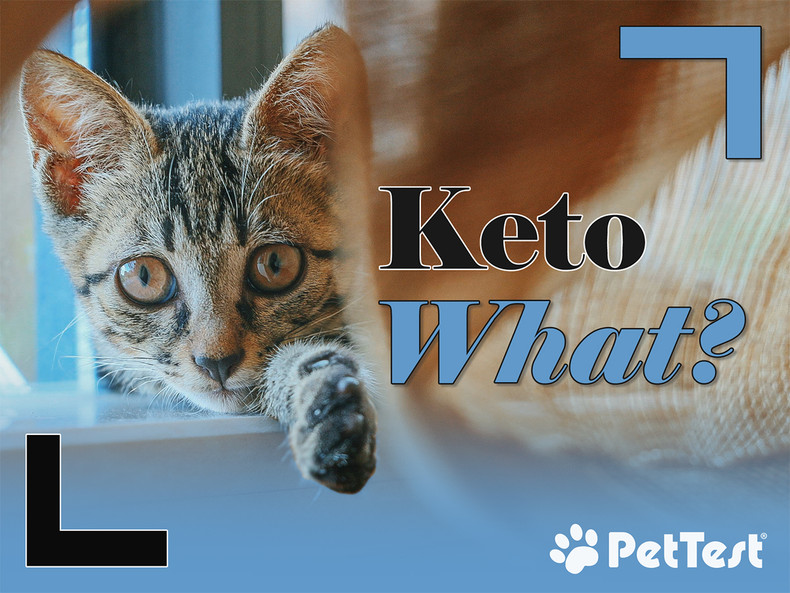Keto What?
I’m not talking about the diet many of the humans use to try to lose weight although the underlying theory does apply. The goal of the” keto” diet is to breakdown fat for energy and, therefore, lose weight and affect the BMI. This is fine in a normal non-diabetic human, but can be pretty awful if the ketones build up in the diabetic kitty. This condition is called diabetic ketoacidosis (DKA). DKA can be caused by less-than-optimal insulin, eating problems, illness, or other stressors. So, how do you know?
The best thing to do is start testing upon diagnosis. If you get a negative, then you might be able to get away with testing if you notice changes such has high glucose levels, illness, stressors, or changes in kitty’s breath smell. Kitty’s breath should not smell sweet or like acetone (nail polish remover or alcohol). Assuming kitty does not have a liquor habit, this is a good indication that a urine ketone test is needed.
How to test for this?This involves sampling some urine. Basically, you have to dip a test strip into a drop of kitty’s urine. If the result is negative or trace, you are likely good to go. Anything above “trace” necessitates a call to your veterinarian right away. There are exceptions because test strips are not going to pick up every kind of ketone. As mentioned before, if kitty’s breath smells sweet or sour like acetone, it is still worth a call to your vet, even if the urine test is negative – just to be on the safe side. DKA caught early makes for easier and less expensive treatment. Test strips can be purchased at the pharmacy, but we at PetTest provide strips that detect both ketones and urine glucose which can be found here.
So I am supposed to get my cat’s pee? Really? Yes! It is not that bad. Putting a thin layer of litter in the box instead of the normal amount can create a puddle to draw from. A fresh clump of litter right after kitty urinates is an option. If you are using a litter box with the removable tray on the bottom with the absorbent pads, remove the pad and get your sample there. As an alternative, I have had several cats that, for some reason, love to pee on plastic bags. If you can keep an eye on them, put on in or near their litter box. You will have a nice little puddle that way as well. This is especially useful if it is only your diabetic kitty that is particularly attracted to bags. You only need a little – it is not like filling the sample cup at the human doctor’s office.
Positive result: First, take a deep breath and do not panic. If the result looks anything more than “trace” on the strip color, even if slightly, you can test again, but still you should give the vet a call. Early treatment is extremely important, as DKA is more dangerous that hypoglycemia and needs professional intervention. If kitty does, in fact, have an episode of DKA, they are more likely to redevelop this in the future even if they are off insulin and being well managed otherwise. It will be important to test for this at an interval suggested by your vet and based on kitty’s symptoms.
A more detailed technical information page is available at FelineDiabetes.com where you can get a ton of information on DKA, ketones, signs and symptoms, etc. The page contains multiple links to related information as well as a discussion thread with common issues, tips and tricks, and support from other sugar moms and dads.
More support is available at the Feline Diabetic Support Group on Facebook, especially if you have questions regarding specific test strips, troubleshooting, venting frustration, or asking for help.
As always, remember to take at least a few minutes of “me time” every day to relax and do something other than worry about kitty. I know from experience that this is not easy, but if you can reduce your stress, that will reduce kitty’s stress.

